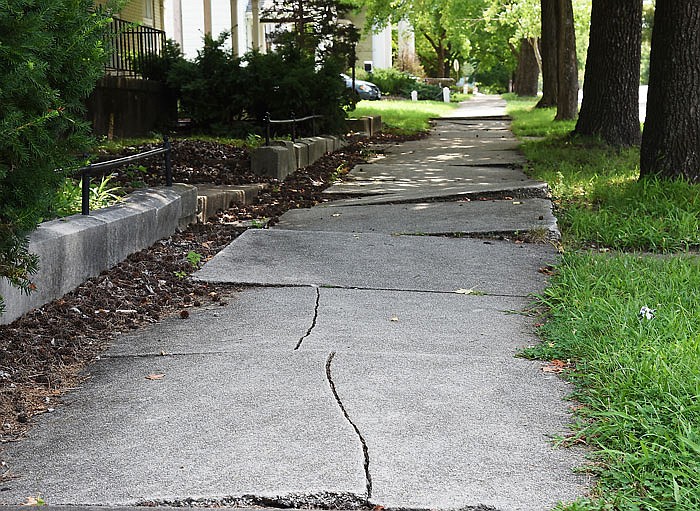Jefferson City's East Capitol Avenue neighborhood meets the legal definition of blight, which could open options for the city to acquire properties in the area.
A new blight study on a portion of the East Capitol Avenue area was presented Tuesday morning to the Jefferson City Housing Authority, and it found the small area on the city's east side meets the definition of both blight and insanitary conditions.
The study looked at the area between Adams and Lafayette streets and State and High streets, which encompasses 38.1 acres and 116 parcels. City staff has previously said the completion of the blight study opens the option for using the land clearance for redevelopment, which is governed by the Housing Authority, to acquire properties in the area.The study, which was done by PGAV Planners, a St. Louis-based firm, states "the property conditions are rapidly deteriorating" in the area with factors of "defective or inadequate street layout, insanitary or unsafe conditions, deterioration of site improvements, improper subdivision or obsolete platting and existence of conditions which endanger life or property by fire and other causes."
In the presentation, John Brancaglione, vice president for PGAV Planners, cited examples of buildings split into apartments with secondary exits supported by nothing but a couple of two-by-fours.
"How is that possible?" Brancaglione asked. "This is a territory that can kind of overwhelm your code enforcement folks."
Brancaglione said the area has declined in value overall, with 35 declining properties representing a loss of nearly $778,000 in assessed valuation between 2007-15. Noting a majority of the buildings are nearing, if not more than, a century old, Brancaglione said things could get worse if nothing is done.
"Without action on the part of a whole host of folks it's going to get worse, not better," Brancaglione said. "You have conditions which are really dangerous."
The study also noted the unusual situation in which 26 of the properties, mostly significantly deteriorated, in the area are owned by one person - Barbara Buescher. It notes the firm has done similar studies in 22 states and more than 400 cities in the last 40 years, and "we cannot recall a situation in which a single property owner accounts for such a significant percentage of properties with qualifying conditions."
The city had filed a 25-count lawsuit against Buescher to repay the debt to the city for work done on her properties by city staff to meet codes. The city won the suit in May, with Buescher being ordered to pay more than $24,000 for work on her properties.
The study states: "The number of deteriorated properties that are owned by parties who are unwilling sellers or where asking prices exceed true market value will likely require the eminent domain powers available via the (Land Clearance for Redevelopment Authority) Law."
In moving forward, John Pletz, attorney for the Housing Authority, said an existing urban renewal plan could be amended to address the issues stated in the study, which the Board of Commissioners approved. By doing that, Pletz said certain properties could be designated for redevelopment and that process could move forward through condemnation, if the property owner is unwilling to sell.
Brancaglione noted some of the properties may be too far gone to redevelop and could need to be demolished, which is all the more reason to move quickly now.
"When it gets to this state of affairs, everybody has to get proactive," Brancaglione said.
The Housing Authority Board of Commissioners expects the amended plan to be ready at its next meeting in September, though it was noted a special meeting could be called earlier if needed. The amended plan also would need to go to the full City Council for approval.
A similar presentation on the blight study will be made to the Jefferson City Council at a work session at 5:30 p.m. Tuesday. Mayor Carrie Tergin said the study is critical to finding solutions for the declining area.
"We're desperate to find options for this area," Tergin said. "Time is of the essence."


